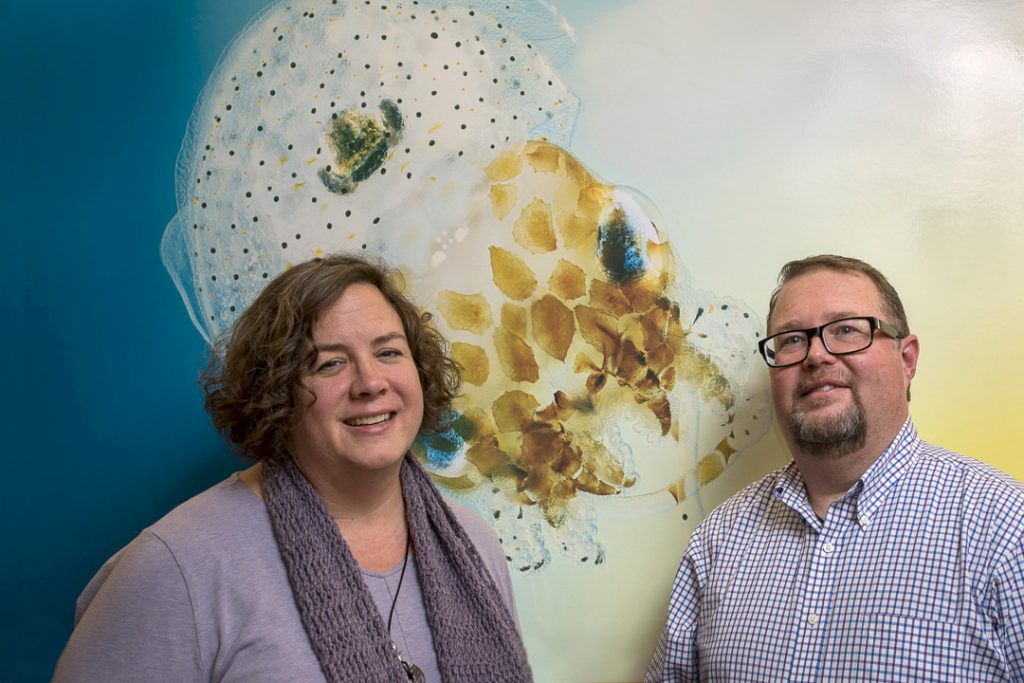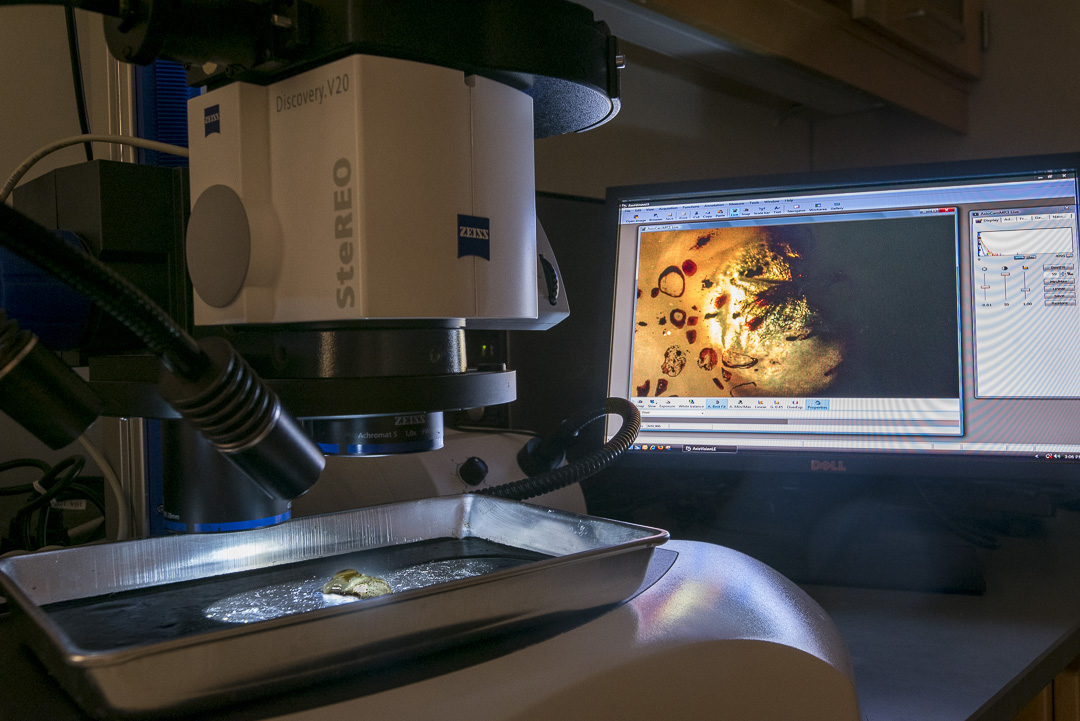If you like viewing pictures of adorable animals on the internet, it’s possible you’ve run across the Hawaiian bobtail squid, a glowing, squishy, golf-ball-sized cephalopod that prompted the Ocean Conservancy to call it the “cutest thing in the ocean.”
But this formidable model organism is a heavy hitter in the biology world, especially at UConn, where it helps scientists understand symbioses, including bioluminescence, immune responses and how species co-evolve.
Now, Spencer Nyholm of the College of Liberal Arts and Sciences and Marcy Balunas of the School of Pharmacy have nailed down what was before a mere hypothesis: This squid harbors dozens of species of symbiotic bacteria in a specialized organ, with the purpose of protecting its eggs from fungal infections.
In short, they’ve evolved to grow medicine inside their bodies – and they’re great new pharmaceutical leads.
“This is a group that hasn’t been studied for its antimicrobial properties, or for producing drugs,” says Nyholm, associate professor in the Department of Molecular and Cell Biology. “It’s exciting that this system could lead to antifungal agents.”
Although scientists have studied the squid – their scientific name is Euprymna scolopes – for more than 30 years, that’s mostly been to understand how they light up, glowing in different intensities. Nyholm was among the scientists to uncover the details of the bacterial symbiosis that leads to their sophisticated camouflage.
But after starting an NSF-funded collaboration with Associate Professor of Pharmaceutical Sciences Marcy Balunas, Nyholm began studying the squid’s specialized reproductive gland, called the accessory nidamental gland, whose function was until then the subject of speculation.
Balunas describes the gland as the size of a pinky fingernail, with thousands of tendrils that Nyholm says act “like pastry bags” to pump bacteria into the jelly coat that’s layered over each of the mother’s 100 to 300 eggs before she lays them on the seafloor.

In laboratory tests, Nyholm’s team, led by former graduate students Allison Kerwin and Andrea Suria, showed that if the bacterial coating is absent, the growing squid eggs succumb to fungal infections. Balunas’ group made chemical extracts from the bacteria and showed that they contained antimicrobial properties that suppressed not only squid-related fungus, but also Candida albicans, which can cause serious and fatal infection in immunocompromised people, such as those with HIV or cancer.
“So many people are affected” by Candida infections, says Balunas. “We know these chemicals have a biological purpose, and they could lead us to drug discovery.”
Host-microbe interactions are becoming an increasingly important focus of research, says Nyholm, because the human microbiota is known to be a major contributor to health and to disease.
There is a dearth of treatments for chronic fungal infections, he says, and the fact that many squid and cuttlefish have this organ opens up a new avenue for antimicrobial research.
He notes that the work would not have been possible had not two scientists studying in different fields come together to solve a problem.
“This is a culmination of many years of research, and the great collaboration we have between our laboratories,” notes Nyholm. “I love my collaboration with Marcy.”
Nyholm hopes to continue to explore the basic biology of this model organism not only to further optimize its use for pharmaceuticals, but because of his interest in the foundational knowledge of a little-studied animal. Despite being known in the literature for more than a hundred years – and perhaps even being noted by Aristotle – science only now knows the function of this highly evolved organ.
For example, there is preliminary evidence that each of the organ’s hundreds of tendrils harbors only one kind of bacteria. Why is that, Nyholm asks? If we know, we might be able to think further about the different types of bacteria that live in the human gut, on our hands, and in our mouth.
“We can look holistically at each of these populations and see how they are different,” he says. “It’s amazing, and exciting, that in this era of microbiome research there are still so many unknowns.”
Read about Nyholm and Balunas’ findings in their paper in the journal mBio.



